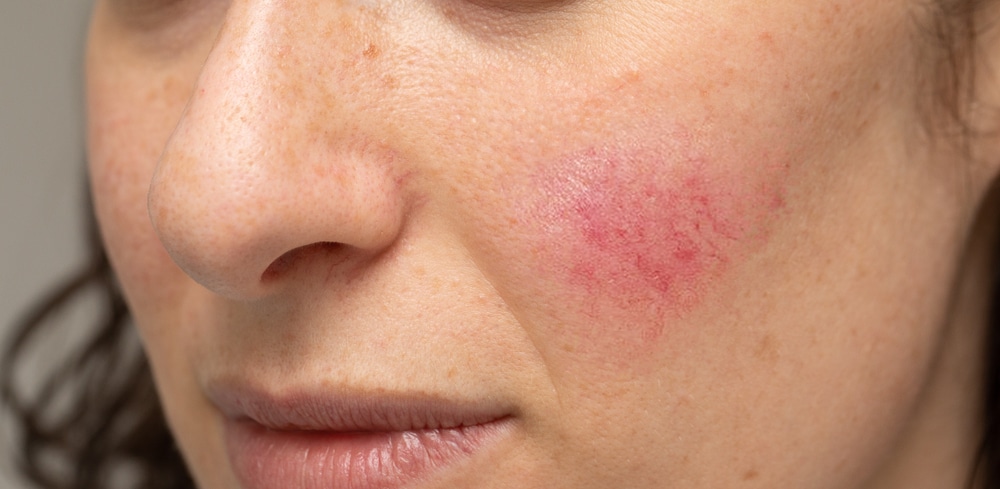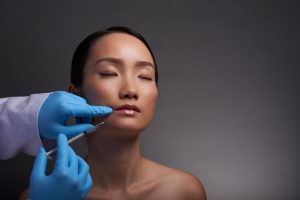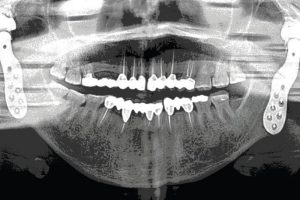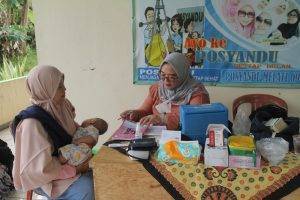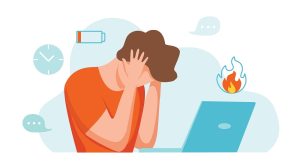Rosacea, a complex skin condition, is intriguingly linked to genetic factors, contributing significantly to its onset and progression.
Research indicates a hereditary predisposition in rosacea patients, suggesting genetics play a crucial role in its development. This genetic association points to the potential for inherited skin barrier dysfunctions or immune responses, which can exacerbate the condition. By exploring these genetic connections, we can gain deeper insights into rosacea’s etiology, paving the way for more targeted treatments and preventive strategies.
The Impact of Environmental Factors on Rosacea in Asia
In Asia, the influence of environmental elements on rosacea is particularly pronounced due to diverse climatic conditions across the region. High levels of UV radiation in many Asian countries exacerbate rosacea symptoms by damaging skin barrier functions and inciting inflammatory responses.
Humidity and urban pollution, prevalent in numerous Asian cities, are also contributing factors. These environmental stressors can lead to a higher frequency of rosacea flare-ups, underscoring the need for tailored management strategies in Asian populations, such as rigorous sun protection and skincare routines adapted to local environmental conditions.
Microbiological Influences on Rosacea: Asian Perspectives
Microbiological factors, notably the presence of Demodex folliculorum mites and Helicobacter pylori bacteria, are significantly implicated in rosacea, with their prevalence varying across different populations.
In Asia, studies reveal a higher density of Demodex mites in rosacea patients compared to those without the condition. For instance, a study in China reported Demodex infestation rates as high as 80-90% in rosacea patients. Similarly, Helicobacter pylori, prevalent in many Asian countries due to varying hygiene standards, is linked to rosacea, particularly its papulopustular form. This correlation underscores the need for a more nuanced approach in the diagnosis and treatment of rosacea in Asian populations, considering these microbiological aspects.
Treatment Efficacy for Rosacea in Asian Populations
Treatment modalities for rosacea in Asian patients show varying degrees of efficacy due to genetic and environmental factors. Topical treatments like metronidazole and azelaic acid are widely used, with studies indicating a success rate of approximately 70-75% in reducing symptoms in Asian patients.
Oral antibiotics, particularly tetracyclines, demonstrate a response rate of around 60-65% in these populations. Interestingly, laser and light therapies, which target vascular and pigmentary changes, are increasingly popular in Asia, showing up to an 80% improvement in rosacea symptoms. These statistics highlight the importance of a tailored approach in treating rosacea in Asia, considering both the physiological and environmental uniqueness of the demographic.
Lifestyle Modifications: A Key Aspect in Rosacea Management
Lifestyle modifications play a critical role in managing rosacea, particularly in Asia, where dietary and environmental factors can significantly impact the condition. A study in South Korea found that certain foods, such as spicy dishes and hot beverages, commonly consumed in Asia, can trigger rosacea symptoms in susceptible individuals.
Moreover, the high humidity and air pollution in many Asian cities necessitate a more rigorous skincare routine to prevent flare-ups. Implementing sun protection measures, reducing stress, and avoiding known irritants are also crucial. Emphasising these lifestyle adaptations is essential for comprehensive rosacea management in the Asian demographic.
Future Perspectives and Research in Rosacea
The future of rosacea management, especially in Asian countries, lies in the ongoing research and development of targeted treatments and preventive strategies. Advances in understanding the genetic and environmental interactions specific to Asian populations are crucial. Moreover, exploring novel therapeutics that address the unique microbiological aspects prevalent in these regions holds promise. Continued research in these areas is vital for improving the quality of life for individuals with rosacea in Asia, paving the way for more personalized and effective management approaches.
References
- Nam, J. H., Yun, Y., Kim, H. S., Kim, H. N., Jung, H. A., Chang, Y., Ryu, S., Shin, H., Kim, H. L., & Kim, W. S. (2017, August 15). Rosacea and its association with enteral microbiota in Korean females. Experimental Dermatology. https://doi.org/10.1111/exd.13398
- Steinhoff, M., Schauber, J., & Leyden, J. J. (2013, December 1). New insights into rosacea pathophysiology: A review of recent findings. Journal of the American Academy of Dermatology. https://doi.org/10.1016/j.jaad.2013.04.045
- Young, A. R., Claveau, J., & Rossi, A. B. (2017, March 1). Ultraviolet radiation and the skin: Photobiology and sunscreen photoprotection. Journal of the American Academy of Dermatology. https://doi.org/10.1016/j.jaad.2016.09.038
- Tan, J., & Berg, M. (2013, December 1). Rosacea: Current state of epidemiology. Journal of the American Academy of Dermatology. https://doi.org/10.1016/j.jaad.2013.04.043
- Yang, X. (2018, July 11). Relationship between Helicobacter pylori and Rosacea: review and discussion. BMC Infectious Diseases. https://doi.org/10.1186/s12879-018-3232-4
- Zhao, Y., Yan, P., Wang, X., Wu, L., Wang, M., Yan, H., & Xiao, S. (2011, December 1). Facial dermatosis associated with Demodex: a case-control study. Journal of Zhejiang University-SCIENCE B. https://doi.org/10.1631/jzus.b1100179
- Liu, R. H., Smith, M. L., Basta, S. A., & Farmer, E. R. (2006, August 1). Azelaic Acid in the Treatment of Papulopustular Rosacea. Archives of Dermatology. https://doi.org/10.1001/archderm.142.8.1047
- The Use of Oral Antibiotics in the Management of Rosacea. (2019, June 1). PubMed. https://pubmed.ncbi.nlm.nih.gov/31251542/
- Lim, H. S., Lee, S., Won, Y. H., & Lee, J. B. (2014, January 1). The Efficacy of Intense Pulsed Light for Treating Erythematotelangiectatic Rosacea Is Related to Severity and Age. Annals of Dermatology. https://doi.org/10.5021/ad.2014.26.4.491
- Ahn, C. S., & Huang, W. W. (2018, April 1). Rosacea Pathogenesis. Dermatologic Clinics. https://doi.org/10.1016/j.det.2017.11.001
- Lee, Y. B., Byun, E. J., & Kim, H. S. (2019, July 7). Potential Role of the Microbiome in Acne: A Comprehensive Review. Journal of Clinical Medicine. https://doi.org/10.3390/jcm8070987




